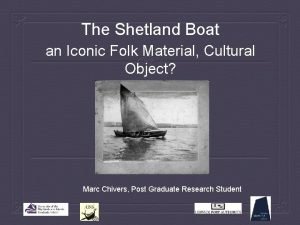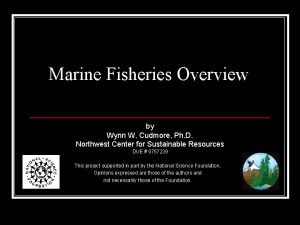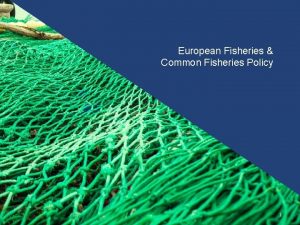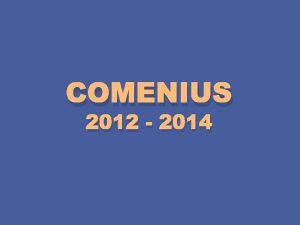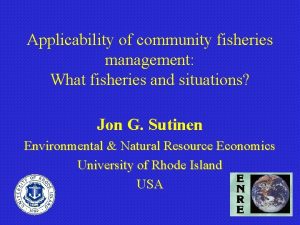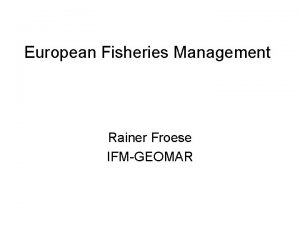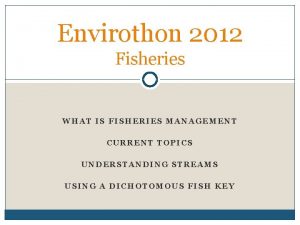Local Fisheries Management in Shetland Leslie Tait Shetland










- Slides: 10

Local Fisheries Management in Shetland Leslie Tait

Shetland Most northerly part of the UK Population ~ 23, 000 Peripheral location, few natural resources At the heart of rich fishing grounds Fishing has underpinned Shetland’s economy throughout history Large, modern fishing, aquaculture, and seafood processing industries Little potential for other significant, sustainable industries Fishing Still Matters !

Shellfish Fishing in Shetland Crabs, lobsters, scallops, etc. Small boat / inshore

Shellfish Fisheries Management 1990 s Little management > No quotas > No restrictions on gear > No limits on effort (No Sea Fisheries Committees in Scotland) Steady increase in number of boats Growing local desire to gain some control of fishery > To prevent over-fishing / stock depletion

Shetland Shellfish Management Organisation Established to manage Shetland’s shellfisheries > to ensure their long-term sustainability; and > to ensure that the local community benefited from local fish stocks A partnership of interested local parties: > Shetland Fishermen’s Association > Independent Fishermen > Shetland Islands Council > Shetland Association of Community Councils > Processors/buyers

Shetland Islands Regulated Fishery Order Regulating Orders grant legal powers to manage shellfisheries Shetland Order > Crabs, lobsters, scallops, queen scallops, whelks, oysters, mussels, cockles, clams, and razorshells > Low water mark to six mile limit (~6, 000 km 2) Unique in Scotland

Shetland Islands Regulated Fishery Order Regulations in Force Licensing Scheme (Annually Renewable, non-transferable) Vessel Size Limit (17 metres) Gear Limitations (Max. 10 scallop dredges, 600/240 creels) Prohibitions (Hydraulic/suction dredges, ‘French’ dredges) Size Limits (Whelks, velvet crabs, lobsters) Closed Seasons (Velvet crabs) Closed Areas (Vulnerable habitats, closed to scallopers)

Science Scientific advice provided by NAFC Marine Centre Partnership between scientists and fishermen Unique long-term data series: > > > Landings data from fishermen’s log-books Data collection by scientists on fishing vessels Fisheries surveys

MSC Accreditation Certified as sustainable, March 2012: > Brown crabs & velvet crabs (creel fishery) > King scallops (dredge fishery) First MSC certification of these fisheries, globally Now due for re-accreditation.

Conclusion Technically it has not changed but a management system has evolved and been refined over the years with changes in detail rather than any fundamental changes. Shetland Regulating Order has allowed the local community to successfully manage its own marine resources Could it serve as an example for other coastal communities in the UK ?






